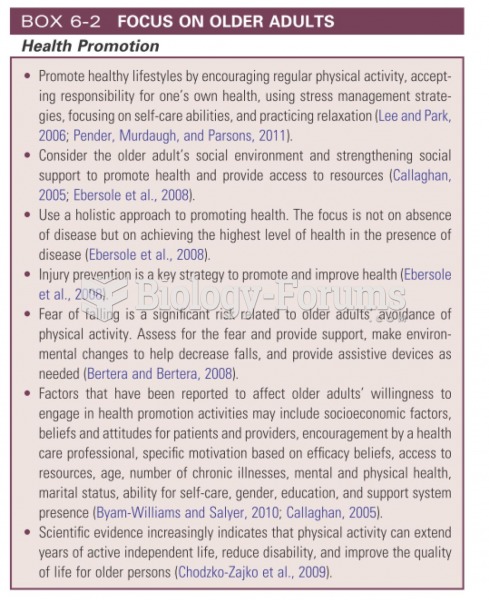In the first few months of life, babies respond to all adults. They don't much care who feeds them, rocks them, or picks them up. By six months, though, infants are more discriminating. They are likely to withdraw from people they do not know and to gurgle and coo only with those who are familiar to them. At this age, babies are likely to protest or withdraw when approached by an unfamiliar person, a phenomenon known as stranger anxiety. When, for instance, seven-month-old Jennifer first met her uncle, Ben, she shrieked loudly and refused to let him hold her. Fortunately, Ben had two children of his own and didn't take Jennifer's rebuff personally. Stranger anxiety typically peaks at about eight months. It usually disappears altogether by fifteen months. At this age, babies have generally gotten used to the idea that unfamiliar people are not necessarily to be feared.
From Zick Rubin, Letitia Anne Peplau, and Peter Salovey,
Psychology. p. 227
Implied Main Idea
a. After the age of six months, babies just don't like strangers.
b. When babies reject strangers, the adults should not take it personally.
c. How babies react to strangers depends a good deal on their age.
Question 2
In Kabul, Afghanistan, a young widow, Sukhirya Hassani, earns her living by renting out cell phones. For ten cents a minute, an Afghani customer can call a friend or relative living miles away. The widow is employed by Roshan, Afghanistan's mobile phone network, which has more than 1.2 million customers, who no longer have to walk to the next town to connect with friends, relatives, or business associates. In India, around 7 million people per month sign up for cell phone service. In 2010, the government calculated that India had approximate 500 million users with more to come. No wonder. For years, Indians in rural areas struggled to stay in touch with friends and family because land-line telephones were so hard to get. Often the wait for one was measured in years. Cell phones, however, have changed all that. Even those living in small villages can find a way to maintain contact with the people important to them. Cell phones have had a similar effect in Africa, bringing together people who once struggled to stay in touch because they had no land line, and the post office was miles away.
Source of information: Jessica Williams,
50 Facts That Should Change the World
Implied Main Idea
a. No matter where you go in the world, you cannot escape cell phones; they are everywhere.
b. All over the developing world, cell phones are bringing people together.
c. In Afghanistan, where years of war have all but destroyed the country, cell phones are making it possible for people to stay in touch.







